Winter 2012 issue of Subterranean Magazine Now Available
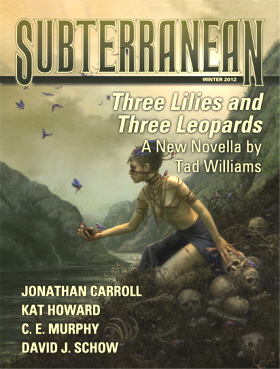 Subterranean Press has published the Winter 2012 issue of their flagship online magazine.
Subterranean Press has published the Winter 2012 issue of their flagship online magazine.
This is the 21st issue. It is presented free by Subterranean Press; content is released in weekly installments until the full issue is published.
This complete issue will feature a pretty impressive lineup:
- “Water Can’t Be Nervous” by Jonathan Carroll
- “The Way the Red Clown Hunts You” by Terry Dowling
- “The Least of the Deathly Arts” by Kat Howard
- “Seeräuber” by Maria Dahvana Headley
- “Drunken Moon” by Joe R. Lansdale
- “Chicago Bang Bang” by C.E. Murphy
- “Treasure Island: a Lucifer Jones Story” by Mike Resnick
- “The Last Song You Hear” by David J. Schow
- “Three Lilies and Three Leopards” by Tad Williams (a new 20,000 word novella)
Subterranean is edited by William Schafer, and published quarterly. The Winter 2012 issue is available here.
The striking cover is by Lauren K. Cannon, whom we met at the World Fantasy Convention in San Diego in November. She had the most impressive booth in the Art Show (by a nice margin), and the unanimous opinion of the Black Gate staff was that it was my duty to lure her into doing art for us — the sooner the better.
We last covered Subterranean magazine with their previous issue, Fall 2011.
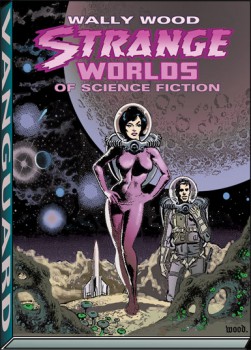
 Keeper of Dreams
Keeper of Dreams 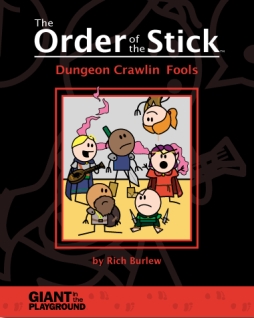 Dying is easy, the old saw has it, but comedy … that’s hard. Only — what happens if we’re talking about a world in which miracles happen to order, and people come back to life whenever a priest wants? Dying suddenly isn’t quite so easy. But comedy, real comedy … that’s still pretty hard.
Dying is easy, the old saw has it, but comedy … that’s hard. Only — what happens if we’re talking about a world in which miracles happen to order, and people come back to life whenever a priest wants? Dying suddenly isn’t quite so easy. But comedy, real comedy … that’s still pretty hard.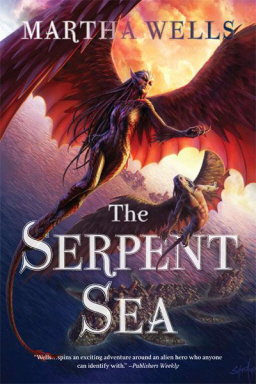
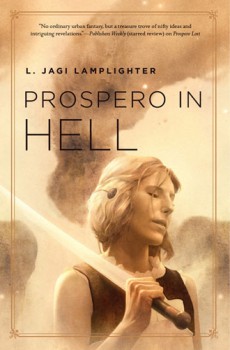 Prospero in Hell
Prospero in Hell Of potential interest to readers of this space is my
Of potential interest to readers of this space is my 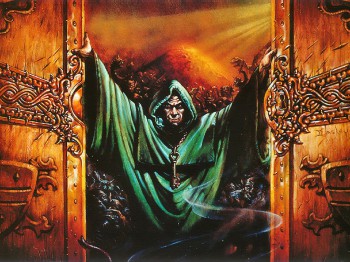
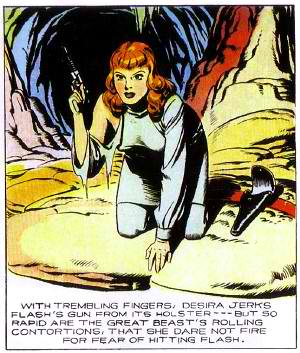
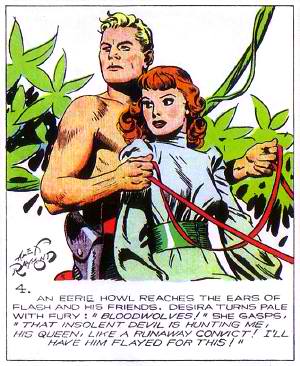
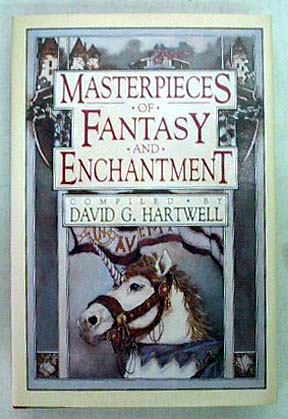 Whenever discussions of fantasy fiction arise, the question of “which came first?” inevitably follows. Newbies mistakenly think that J.R.R. Tolkien started the genre, overlooking authors like William Morris and E.R. Eddison who had already begun a rich tradition of secondary world fantasy. The same arguments swirl over the many sub-genres of fantasy, too. For example, most believe that Robert E. Howard is the proper father of swords and sorcery, beginning with his 1929 short story “The Shadow Kingdom.” But others have pled the case for Lord Dunsany’s “The Fortress Unvanquishable, Save for Sacnoth” (1908), and so on.
Whenever discussions of fantasy fiction arise, the question of “which came first?” inevitably follows. Newbies mistakenly think that J.R.R. Tolkien started the genre, overlooking authors like William Morris and E.R. Eddison who had already begun a rich tradition of secondary world fantasy. The same arguments swirl over the many sub-genres of fantasy, too. For example, most believe that Robert E. Howard is the proper father of swords and sorcery, beginning with his 1929 short story “The Shadow Kingdom.” But others have pled the case for Lord Dunsany’s “The Fortress Unvanquishable, Save for Sacnoth” (1908), and so on.